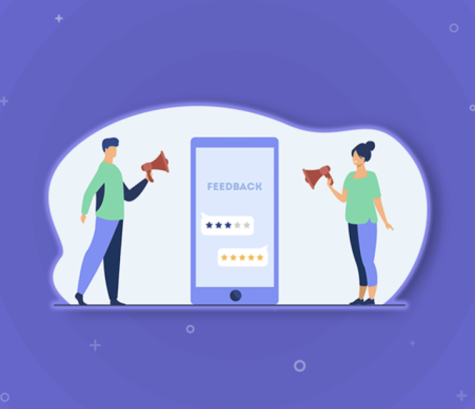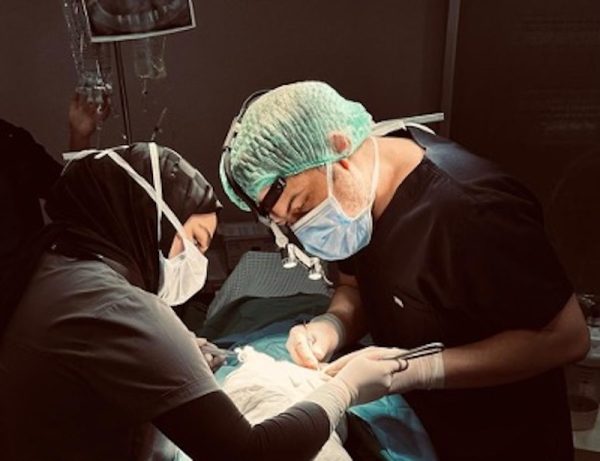How Healthcare Chatbots Will Capture Majority Market Share in 2023
Branded Content by Cosmic Press
The global healthcare market is projected to be around $665 billion by the year 2028, according to the latest reports.
Healthcare spending in the US alone reached $4.3 trillion in 2021, which is more than the GDP of England.
As the numbers show, the healthcare industry is full of opportunities, especially for enterprising tech companies. And it is not like the leaders in healthcare technology are hesitant to invest in technology.
US healthcare providers alone spent a whopping $17.9 billion on cloud-based technologies in 2022, a number that is projected to rise further in the future.
So it is no wonder that more and more technology companies are entering the healthcare space, looking to disrupt a very conventional industry. One such technology that is going to be at the forefront of this disruption? Chatbots!!
In this post, we are going to learn all about healthcare chatbots and how they are disrupting the US healthcare industry in 2023.
Before we begin, here’s a quick refresher on what a healthcare chatbot is:
What is a healthcare chatbot?
A chatbot, as you may be well aware, is an automated computer program that is designed to simulate conversation with a human being. Websites and applications generally deploy chatbots for a variety of reasons, the most common being instantaneous response and 24/7 availability.
A healthcare chatbot is a chatbot that is specifically designed to answer queries related to healthcare services and provide an alternative to browsing the website of a hospital or talking to a call center agent.
Healthcare chatbots are self-service tools, targeted towards the tech-savvy generation, a majority of whom prefer to interact with a chatbot over a live human agent (69%, according to this Salesforce report).
Now that you know what a healthcare chatbot is, let us see how they are being deployed in the medical chatbot industry.
5 use cases of chatbots in the healthcare industry:
1. Provide patients with relevant information:
A healthcare chatbot is the perfect tool for hospitals to dispense information about possible health scares, including the outbreak of a pandemic such as COVID-19. When such a health scare occurs, it is the healthcare workers who are the first affected, being at the forefront of the battle and always risking infection.
Chatbots can be used to inform patients about common symptoms of the disease and also guide infected patients to facilities that have available beds. Chatbots can also be used to answer FAQs and provide information around statistics such as the number of infected people in a particular area.
WHO used a chatbot in Congo to dispense information to patients in the local language during the COVID-19 pandemic. With more and more healthcare organizations recognizing the need to get the right information in front of patients at the right time, we can see a more widespread adoption of chatbots.

2. Handle prescriptions
One important area that chatbots are making inroads with is handling prescriptions for patients. A lot of patients have difficulty remembering to take their medicines on time, and chatbots can be of immense help in this sphere. Healthcare chatbots can remind patients to refill their prescriptions and also go one step beyond.
If the patients face any difficulty getting refills for their medicines, they can reach out to a healthcare chatbot, which can then get in touch with their healthcare provider and solve the issue. Currently, there are chatbots in the market that can recommend refills to patient’s prescriptions using details such as patient’s name, date of birth, doctor’s name, last visit, dosage, etc.
3. Collect patient feedback
Feedback forms are a thing of the past, but feedback isn’t. Any patient visiting the hospital will have something to say about the facilities and the service provided, and it is important to incorporate feedback to improve the services.
According to this survey from SilverCRM, 62% of the respondents said good communication and continuous engagement were at the top of patients’ minds when they chose a hospital. Collecting patient data and feedback means customers are provided with good care, and there are fewer chances of errors in more complicated cases.

The vast amount of data collected can also be used to anticipate FAQs, which the chatbot can then be trained to answer. This will help the patients coming to your hospital website leave with a more positive customer experience.
4. Schedule appointments
One of the most critical applications of chatbots is appointment scheduling, an area that hospitals are investing a lot of resources at the moment. Patients often find it confusing to navigate a website, and also some hospitals lack the technological resources to invest in an intuitive, easy-to-use web interface.

A chatbot is the perfect solution for this particular problem. Northwell Health, for instance, introduced a chatbot to help reduce the number of patients who did not show up for colonoscopies, a procedure that is critical to cancer diagnosis. Researchers will also use the chatbot to monitor cancellations, patient satisfaction, and successfully completed procedures.
5. Symptom assessment
Chatbots are uniquely poised to collect patient information by asking them questions in case a patient has difficulty typing lengthy emails or talking to a healthcare expert. Chatbots with rich messages can also ask questions like “Are you feeling pain?” or “ Is there shortness of breath?”

“Symptoma” for example, is an AI-powered symptom checker that claims to predict COVID-19 with an accuracy of 96.66%. Chatbots in the market can also connect you to a doctor by using a simple interface that takes your symptoms as input. Based on the symptoms that you enter, the chatbot will let you know the possible conditions and recommend the next steps.
As you can see, chatbots can help revolutionize the healthcare industry in a variety of ways, and we are just at the tip of the iceberg when it comes to this technology. Healthcare chatbots are more convenient than traditional methods to reach patients and integrate easily with Electronic Health Records (EHRs). In 2023, as the pandemic wanes and more and more people adopt telemedicine, we can see chatbot technology coming to the forefront.
Branded content furnished by our promotional partners. The Daily Sundial editorial staff is not involved in its production. Content does not reflect the views or opinions of the editorial staff.





